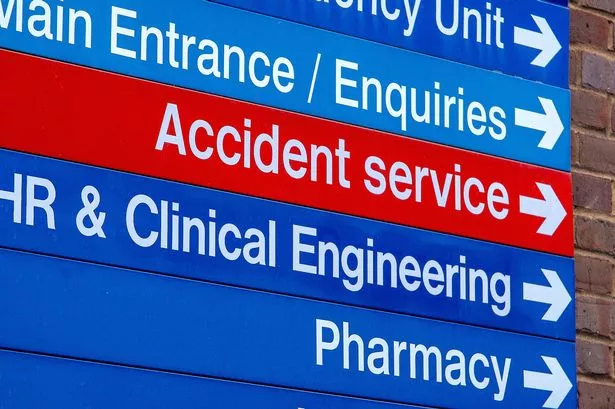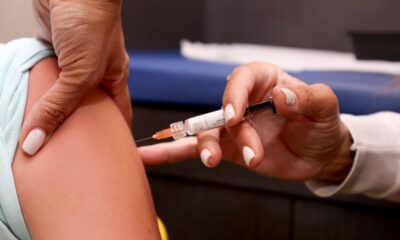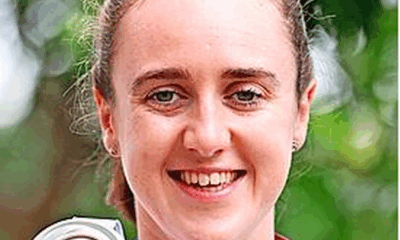Health
NHS Advises Parents on Managing Children’s Growing Pains

Parents of children aged between 3 and 12 years have received important guidance from the National Health Service (NHS) regarding the management of a common condition known as growing pains. This advice comes in response to concerns about the discomfort and distress that many youngsters experience during these growing phases.
Growing pains typically manifest as a dull ache or throbbing sensation in the legs, affecting the muscles rather than the joints. These symptoms often occur in the evenings or at night, usually disappearing by morning. According to the NHS, while growing pains are common and generally harmless, they can be unsettling for both children and their parents.
In their recommendations, the NHS suggests several methods to alleviate discomfort. Parents can gently massage the affected areas, apply a covered hot water bottle or heat pack, and administer children’s ibuprofen or paracetamol for pain relief. Importantly, the NHS cautions against giving aspirin to children under the age of 16 unless specifically prescribed by a doctor.
When to Seek Medical Advice
The NHS advises parents to consult a general practitioner (GP) if their child exhibits certain concerning symptoms. These include persistent pain in one leg, pain upon waking, or discomfort that occurs during walking or physical activities. Additional warning signs warranting a doctor’s visit include:
– Severe pain that prevents walking or causes limping
– Pain in joints such as knees or ankles
– Presence of a rash, swelling, or unusual bruising on the legs
– Accompanying high temperature or unusual fatigue
– Changes in appetite or unexplained weight loss
Understanding the Causes of Growing Pains
The exact cause of growing pains remains unclear. The NHS clarifies that these pains are not linked to the actual process of growth and do not indicate any serious underlying condition. They are more commonly observed in active children, particularly after engaging in vigorous physical activities. Additionally, children with a condition known as joint hypermobility syndrome may be more prone to experiencing growing pains.
To help alleviate discomfort, Healthier Together recommends specific stretches that can be performed daily. These stretches include hamstring, calf, and quadriceps stretches, each designed to ease tension and improve flexibility. Children should hold each pose for approximately 30 seconds, repeating the stretches three times on each leg.
By following the NHS’s guidelines and employing simple at-home remedies, parents can effectively manage their children’s growing pains, providing much-needed comfort during these challenging periods.
-

 Entertainment3 months ago
Entertainment3 months agoAnn Ming Reflects on ITV’s ‘I Fought the Law’ Drama
-

 Entertainment4 months ago
Entertainment4 months agoKate Garraway Sells £2 Million Home Amid Financial Struggles
-

 Health3 months ago
Health3 months agoKatie Price Faces New Health Concerns After Cancer Symptoms Resurface
-

 Entertainment3 months ago
Entertainment3 months agoCoronation Street’s Carl Webster Faces Trouble with New Affairs
-

 Entertainment3 months ago
Entertainment3 months agoWhere is Tinder Swindler Simon Leviev? Latest Updates Revealed
-

 Entertainment4 months ago
Entertainment4 months agoMarkiplier Addresses AI Controversy During Livestream Response
-

 Science1 month ago
Science1 month agoBrian Cox Addresses Claims of Alien Probe in 3I/ATLAS Discovery
-

 Entertainment4 months ago
Entertainment4 months agoKim Cattrall Posts Cryptic Message After HBO’s Sequel Cancellation
-

 Entertainment2 months ago
Entertainment2 months agoOlivia Attwood Opens Up About Fallout with Former Best Friend
-

 Entertainment3 months ago
Entertainment3 months agoMasterChef Faces Turmoil as Tom Kerridge Withdraws from Hosting Role
-

 Entertainment4 months ago
Entertainment4 months agoSpeculation Surrounds Home and Away as Cast Departures Mount
-

 World3 months ago
World3 months agoCole Palmer’s Mysterious Message to Kobbie Mainoo Sparks Speculation




















